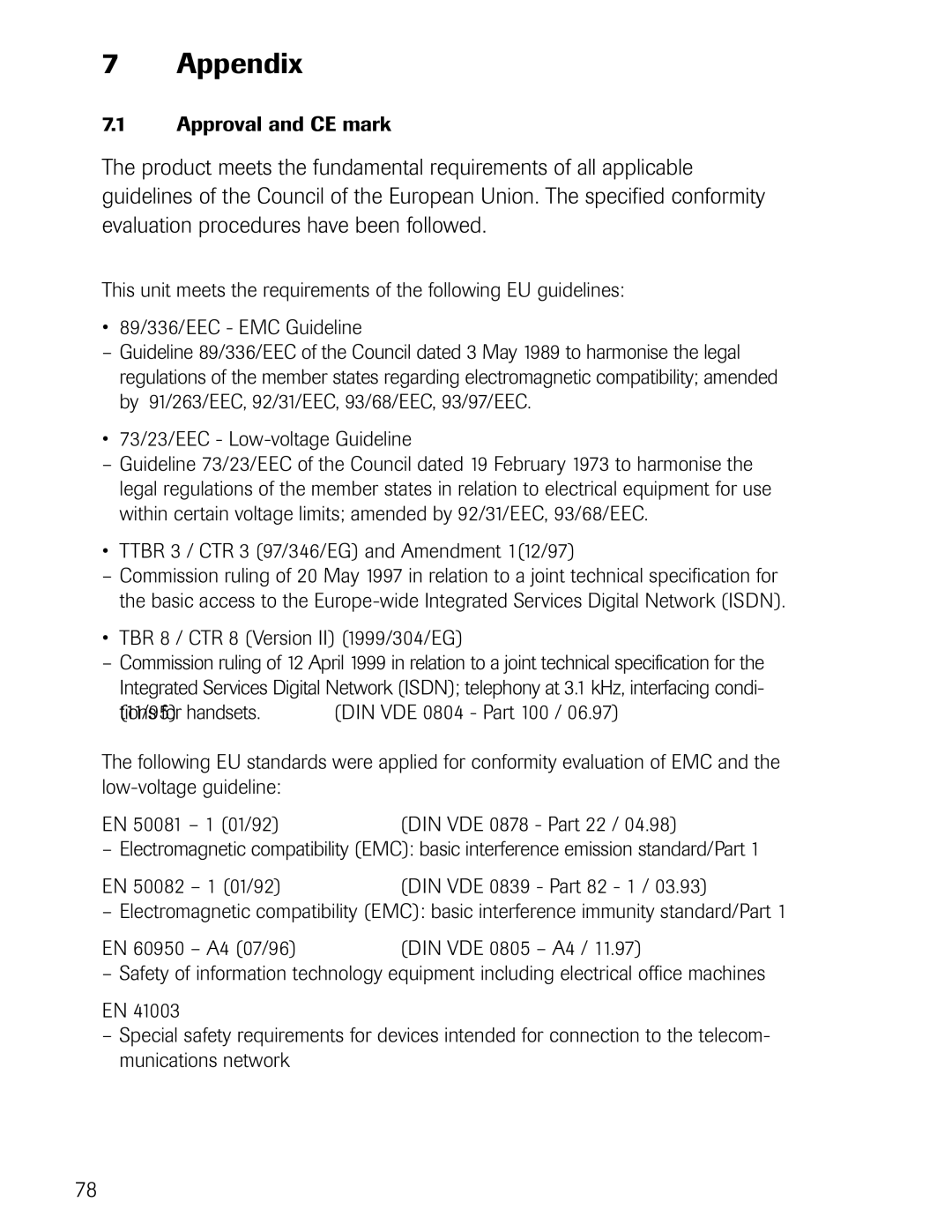7Appendix
7.1Approval and CE mark
The product meets the fundamental requirements of all applicable guidelines of the Council of the European Union. The specified conformity evaluation procedures have been followed.
This unit meets the requirements of the following EU guidelines:
• 89/336/EEC - EMC Guideline
–Guideline 89/336/EEC of the Council dated 3 May 1989 to harmonise the legal regulations of the member states regarding electromagnetic compatibility; amended by 91/263/EEC, 92/31/EEC, 93/68/EEC, 93/97/EEC.
• 73/23/EEC - Low-voltage Guideline
–Guideline 73/23/EEC of the Council dated 19 February 1973 to harmonise the legal regulations of the member states in relation to electrical equipment for use within certain voltage limits; amended by 92/31/EEC, 93/68/EEC.
• TTBR 3 / CTR 3 (97/346/EG) and Amendment 1(12/97)
–Commission ruling of 20 May 1997 in relation to a joint technical specification for the basic access to the
• TBR 8 / CTR 8 (Version II) (1999/304/EG)
–Commission ruling of 12 April 1999 in relation to a joint technical specification for the Integrated Services Digital Network (ISDN); telephony at 3.1 kHz, interfacing condi-
tions(11/95)for handsets. | (DIN VDE 0804 - Part 100 / 06.97) |
The following EU standards were applied for conformity evaluation of EMC and the
EN 50081 – 1 (01/92)(DIN VDE 0878 - Part 22 / 04.98)
– Electromagnetic compatibility (EMC): basic interference emission standard/Part 1
EN 50082 – 1 (01/92)(DIN VDE 0839 - Part 82 - 1 / 03.93)
– Electromagnetic compatibility (EMC): basic interference immunity standard/Part 1
EN 60950 – A4 (07/96)(DIN VDE 0805 – A4 / 11.97)
– Safety of information technology equipment including electrical office machines
EN 41003
–Special safety requirements for devices intended for connection to the telecom- munications network
78
